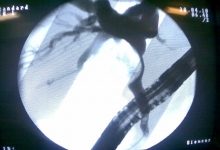Previous issue | Next issue | Archive
![]() Volume 11 (4); July 25, 2021 [Booklet]
Volume 11 (4); July 25, 2021 [Booklet]
Ecotoxicity of hospital wastewaters and their impact on bacterial multi-drug resistance: a review
| Ecotoxicity of hospital wastewaters and their impact on bacterial multi-drug resistance: a review |
Ouedraogo GA, Kone S, Ouedraogo A, Ouedraogo HS, Traore R, Cisse H, Bassolé IHN, Traore Y and Savadogo A.
J. Life Sci. Biomed., 11(4): 58-71, 2021; pii:S225199392100008-11
DOI: https://dx.doi.org/10.51145/jlsb.2021.8
Abstract
Introduction. Hospitals use large varieties of substances for medical purposes such as in diagnostics, research, and upkeep of care materials. Diagnostic materials/substances, disinfectants, and excreted non-metabolized pharmaceuticals by patients, reach the wastewater. This form of elimination may generate risks for aquatic organisms, the emergence of antibiotic resistance, and human health problems. Aim. The aim of this study was to synthesize the contribution of liquid hospital effluents to the fragility of health in general and the emergence of bacterial resistance in particular. Methods. The data were collected from science’s database using keywords. Results. The results showed that the heavy metal residues in these effluents and their bacterial selection mechanism reduce biodiversity, increase the vulnerability of urban and peri-urban populations, and promote the proliferation of multi-drug resistant bacteria. The threat is particularly worrying with the advent of resistance to the beta-lactams. Recommendation. Intervention strategies must be integrated and targeted at those primarily responsible for the management of hospital liquid effluents and the systems for handling these effluents.
Keywords: Hospital liquid effluent, Physico-chemical parameter, Bacterial resistance
[Full text-PDF] [XML] [ePub] [Export citation to BibTeX, RIS & EndNote] [How to Cite] [Semantic Scholar] [Dimensions ID]
Effect of manually applied device on hand strength and functions in physiotherapists
| Effect of manually applied device on hand strength and functions in physiotherapists |
Mohamed RH, Elsayed WH, and Amin DI.
J. Life Sci. Biomed., 11(4): 72-80, 2021; pii:S225199392100009-11
DOI: https://dx.doi.org/10.51145/jlsb.2021.9
Abstract
Background. Musculoskeletal injuries are one of the largest health problems among physiotherapists, because their work exposes them to have a high risk of grip strength, pinch of thumb strength, and hand functions problems. Aim: This study aimed to investigate the effect of the manually applied cavitation device on hand grip, pinch of thumb strength, and hand functions. Methods. From 60 physiotherapists were participated in this research, 30 of them (as group A with 30 subjects) did not use the manually applied cavitation device before and 30 physiotherapists (as group B with 30 subjects) used the manually applied cavitation device at least for one year. Handheld dynamometer has been used to measure grip strength, pinch dynamometer was used to measure pinch of thumb strength, and Michigan questionnaire was used to assess hand functions. Results. In group A (within group) there was no significant difference of pinch strength or hand functions when compared between dominant hand and non-dominant hand of the same subject, while there was significant increase of grip strength at dominant side compared to non-dominant side. In group B (within group) there was no significant difference of grip strength and hand functions when compared between dominant hand and non-dominant hand of the same subject while there was significant increase of pinch strength at dominant side compared to non-dominant side. A comparison between dominant sides of groups A and B, and also between non-dominant sides groups A and B showed significant increase of pinch of thumb strength of dominant and non-dominant side of group A in relation to group B. There was significant increase of hand functions of dominant side of group A in relation to group B while there was no significant difference of hand functions of non-dominant side between groups A and B. Conclusion. Work-related wrist-hand grip strength, pinch of thumb strength, and hand functions in physiotherapists is a prevalent problem among physiotherapists who perform manual techniques and use manually applied device for long time. Recommendations. There is a need to perform similar studies on large group, for physiotherapists working for many years with the manually applied cavitation device and also to find the effect of the manually applied cavitation device on elbow, shoulder, and cervical pain in physiotherapists.
Keywords: Work-related musculoskeletal disorder, manually applied device, physiotherapists, hand functions.
[Full text-PDF] [XML] [ePub] [Export citation to BibTeX, RIS & EndNote] [How to Cite] [Semantic Scholar] [Dimensions ID]




































